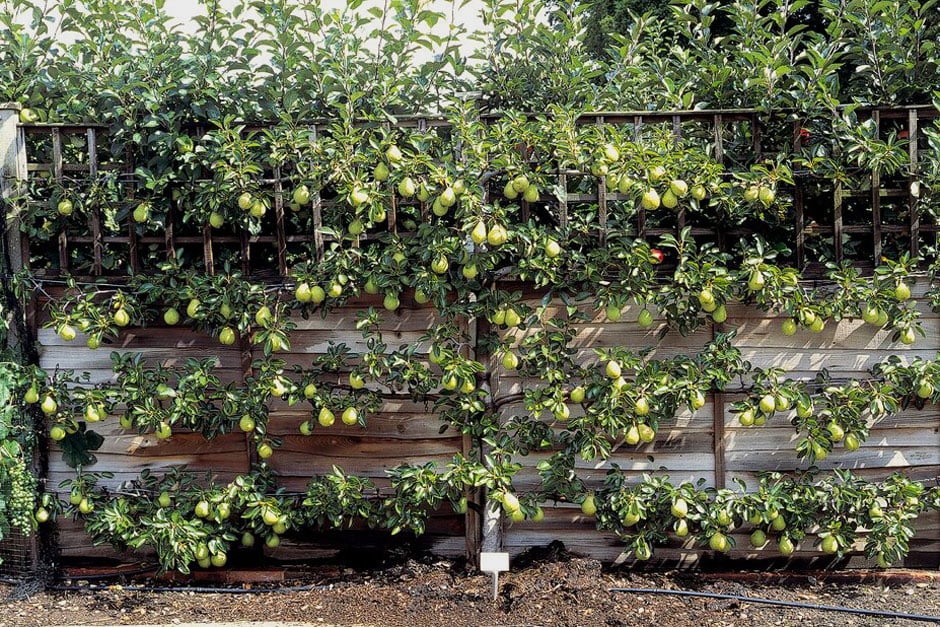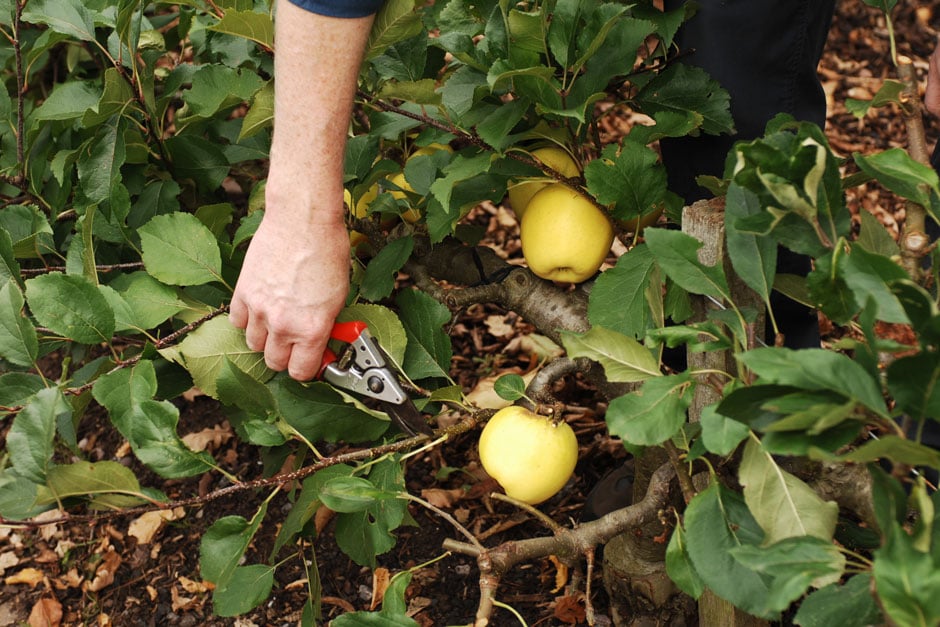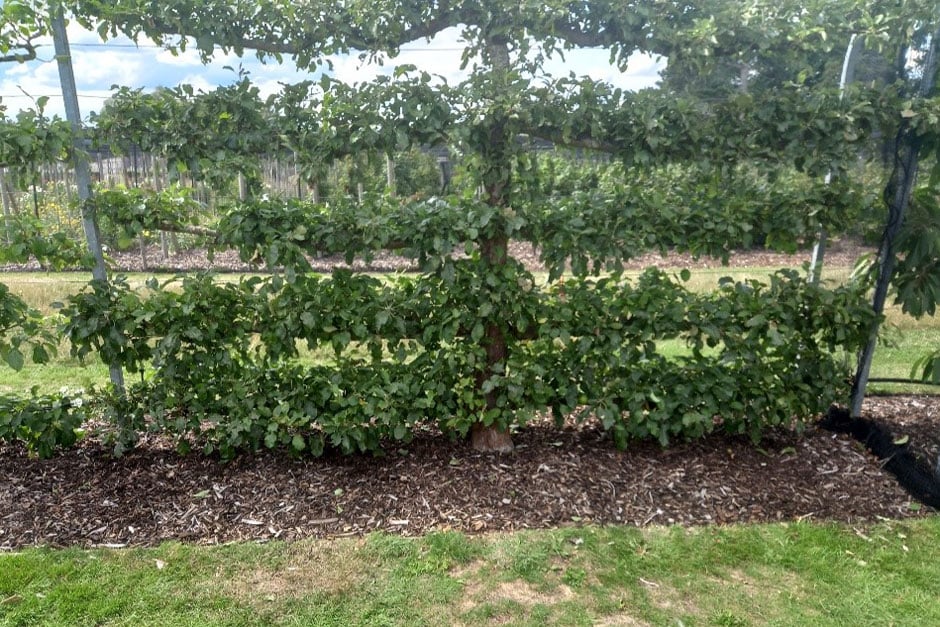RHS Horticultural Specialist Jim Arbury discusses the finer points of summer pruning, crucial for trained forms of apples and pears

 Trained forms of apples and pears have an architectural beauty all of their own, and are excellent for gardens and allotments. They take up less space than freestanding trees, and many are suitable for growing against walls and fences. Additionally, many allotments do not allow larger trees because they could shade other plots.
Trained forms of apples and pears have an architectural beauty all of their own, and are excellent for gardens and allotments. They take up less space than freestanding trees, and many are suitable for growing against walls and fences. Additionally, many allotments do not allow larger trees because they could shade other plots.
I have an espalier apple (branches in tiers) trained on posts and wires on one of my allotments, at the boundary with the main track through the plots. Stepover cordon apples (one tier tall; being summer pruned in the image below) are excellent for planting alongside paths, as are oblique cordons (the trunk set at roughly a 45 degree angle), and these forms really help to maximise crops in smaller spaces.
 Trained trees like these are summer pruned to restrict growth and encourage the development of fruit buds on short fruiting spurs. This also allows light to the branches and good air movement, helping to prevent disease. I prune mine in late summer as the growth slows down.
Trained trees like these are summer pruned to restrict growth and encourage the development of fruit buds on short fruiting spurs. This also allows light to the branches and good air movement, helping to prevent disease. I prune mine in late summer as the growth slows down.
 This is usually late July or early August for pears and mid- to late August for apples. However, the exact time varies depending on when the new shoots stop growing and terminal buds forms at the branch tips (image shows a terminal bud).
This is usually late July or early August for pears and mid- to late August for apples. However, the exact time varies depending on when the new shoots stop growing and terminal buds forms at the branch tips (image shows a terminal bud).
My trained apples are promising a heavier crop this year, which slows down the growth and means pruning can be done fairly early in August. If the growth is more vigorous, the crop is light, the summer is wet or you’re in the north or west of the country, pruning is best delayed.
Before summer pruning, tie in any shoots that are needed to extend the framework of the tree. These include shoots needed to extend the arms of an espalier, or the main stem of a cordon. If I didn’t tie them in before pruning, I might accidentally prune them off, which wouldn’t be good.
 Prune the remainder of the young shoots that are longer than secateur’s length (about 20cm or 8in long). If they’re growing directly from the branch framework, prune them to about 5cm (2in) from the base (see image showing cut shoots), and if they are from existing spurs, to 2.5cm (1in) from their base.
Prune the remainder of the young shoots that are longer than secateur’s length (about 20cm or 8in long). If they’re growing directly from the branch framework, prune them to about 5cm (2in) from the base (see image showing cut shoots), and if they are from existing spurs, to 2.5cm (1in) from their base.
Fruit buds should then form on the stub that remains, either this year or next. Shorter shoots that are left unpruned will usually have a fruit bud at their tip, and so will flower next year and hopefully fruit.
 If there is re-growth following pruning in summer (see image showing new young growth), it might be that you pruned too early. However, these shoots can be pruned to one bud beyond the previous cut in autumn.
If there is re-growth following pruning in summer (see image showing new young growth), it might be that you pruned too early. However, these shoots can be pruned to one bud beyond the previous cut in autumn.
Of course, pruning does not always get done on time, especially if you go on a summer holiday. If you miss the summer prune, do it in the autumn or winter, rather than waiting until next summer.
Summer pruning is done while there is fruit on the trees. This isn’t a problem because only the young growth is pruned. However, be careful not to knock off any of the developing fruit.
Over time, the fruiting spurs you create with this method of pruning may become more crowded and extended. At this point, it is time to do some winter pruning to thin out and shorten some of these.
If you have a particularly old, congested or overgrown tree that hasn’t been kept in check with regular pruning, it can be rejuvenated into an attractive and productive tree through renovation pruning.
 Pick of the crop
Pick of the crop
 Look for the RHS Award of Garden Merit (AGM) when buying vegetable seed or small plants. You can also download the RHS lists of recommended cultivars.
Look for the RHS Award of Garden Merit (AGM) when buying vegetable seed or small plants. You can also download the RHS lists of recommended cultivars.
You may also be interested in...
About the author – Jim Arbury
Jim Arbury is a well-known face around the RHS, passionate about fruit and passing on his decades of experience – show him an apple and he’ll often tell you what cultivar it is from memory. In his spare time, you’ll find him tending one of three allotments, kitted up in a bee keepers suit at the hives, or running along the lanes and footpaths of Surrey.

